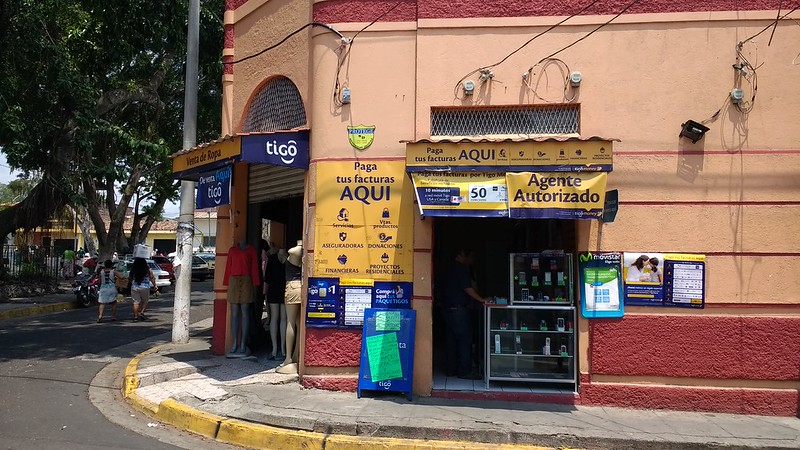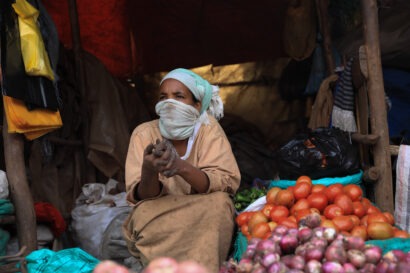Digital finance is experiencing rapid evolution, with governments and economies becoming increasingly digitalised. For tax systems, the implications are profound.
As part of the ICTD’s commitment to understanding and sharing knowledge via DIGITAX, we had the privilege of participating in the Society for the Advancement of Socio-Economics (SASE) Conference in Rio de Janeiro, Brazil, in July 2023.
We presented two recent DIGITAX research papers: Technology and tax: Adoption and impacts of e-Services in Rwanda and Digital merchant payments as a medium of tax compliance. The papers explore how the evolution of digital services and digital payments in Rwanda has affected taxpayer perceptions and behaviours. As the conference largely focused on how technological innovation and disruption are leading to the formation of a new order, we were eager to learn from our peers and deepen our knowledge. While conference participants were from all over the world, many came from Argentina and Brazil; these more developed economies offer opportunities for improving our understanding of the potential of technology in Africa.
We drew three main lessons for African economies.
- First, that electronic payments are gaining momentum in the developing world but could also increase informal transactions and illegal markets.
- Second, that digitised currencies still face barriers in terms of take-up and regulation.
- Third, that inter-institutional data sharing – when working properly – holds great potential to boost government functions and processes.
Lessons on electronic payments, digitised currencies, and data sharing
A first lesson refers to the widespread popularity of electronic payments in Latin America. Within Brazil, Pix – the Central Bank’s digital payments platform launched in 2020 – is prevalent everywhere, from coconut vendors on the street to formal shops.
Pix’s integration into everyday Brazilian life in just three years has been incredible. This proliferation is neither based on a mobile wallet nor a private payment platform. Rather, it is deeply anchored in Brazil’s banking infrastructure.
This is made possible largely thanks to the strong nationwide presence of Caixa Econômica Federal, a state-owned bank. Unlike many developing countries, Brazil’s share of banked adults is quite high (84 per cent), providing a ready user base for Pix. Its expansion has also sparked questions about whether Pix transfers are traceable by tax authorities. Currently, they are not, unless it is determined by law that a suspected person or entity has breached confidentiality and lost their banking rights. An interesting nuance is Pix’s default 1,000 Brazilian real (around US$ 205) limit for late-night transactions due to high crime rates – something we sadly experienced firsthand during an armed robbery on our final night in Rio.
Outside Brazil, our attention was drawn to two payment providers: Ualá, from Argentina, and Mercado Pago, available in Argentina, Brazil, Chile, Colombia, Mexico, Peru, and Uruguay. These platforms – while not allowed to take deposits – have drastically changed how payments are made in these countries. There are advantages and disadvantages. Advantages include quicker payments and the possibility of mining payment data (subject to legal regulations). Disadvantages include accelerated and more covert payment schemes in illegal marketplaces, as well as challenges in reaching the unbanked.
A second lesson concerns central bank digital currencies (CBDCs). Case studies from the USA, Canada, El Salvador and the Bahamas were presented at the conference. CBDCs are becoming increasingly popular, thanks to their ability to control illicit flows and money laundering, and to diversify payment options by increasing speed and efficiency. However, challenges persist as take-up remains suboptimal. In the case study countries, people need to be informed about the benefits of CBDCs, and to be equipped with adequate connectivity in remote areas. These issues are consistent with recent DIGITAX work around the take-up of tax e-services in Rwanda and Eswatini. Important security concerns are also at play. Just as for mobile money-based transactions, users are reluctant to share transaction information with the government. A debate is ongoing on where to strike a balance between securing privacy and monitoring financial transactions.
The last lesson is on the potential of inter-institutional data-sharing to boost government service delivery and bureaucratic intervention. In Argentina during the pandemic, a massive support programme targeted companies and registered workers with compensations and subsidies. Crucially, the tax administration identified and screened beneficiaries using its own registry, supported by live information from electronic invoices and online applications. It relied on robust data-sharing of public records and collaboration with trade unions, tax practitioners and business organisations, and used strict algorithms and data-checks to confirm eligibility. It also promoted use of bank accounts to receive funds, thanks to strong public–private cooperation. While overall the programme was successful – especially in updating businesses’ information and better segmenting business categories – challenges remained with the opaque behavioural responses of some businesses, which creatively under-declared turnovers and under-registered employees.
Thoughts for future research
One key takeaway from the presentations was that the vague regulations that exist in the nascent digital payments sphere will continue to make effective taxation extremely difficult as long as data are not shared with tax authorities.
As our research in Africa revealed, regulatory barriers severely limit the sharing of data about private financial transactions for tax purposes. We were surprised to learn that in Argentina, because of the strong effort to regulate cash use, Ualá and Mercado Pago are preferred over cash and crypto payments when purchasing illegal products due to their ease of use, current lack of strong fiscal enforcement, and simplified integration with the local banking system.
Unlike the mobile money trends common in Africa, in Latin American economies, telecom-based mobile wallets dominate. And while Brazil has moved forward with a platform (Pix) linked directly to banking infrastructure, payment platforms that are mostly bank-led currently lead the way in Argentina and other Latin American markets.
We are certain that digital payments have the promise and potential to significantly transform tax systems. However, further research is needed to understand the realities and challenges of implementing these solutions, especially when it comes to barriers to take-up and data-sharing for tax purposes.
____
Authors’ note: The conference provided an enriching experience, both academically and personally, and we would like to extend our heartfelt gratitude to everyone who made our time in Rio productive and memorable.



